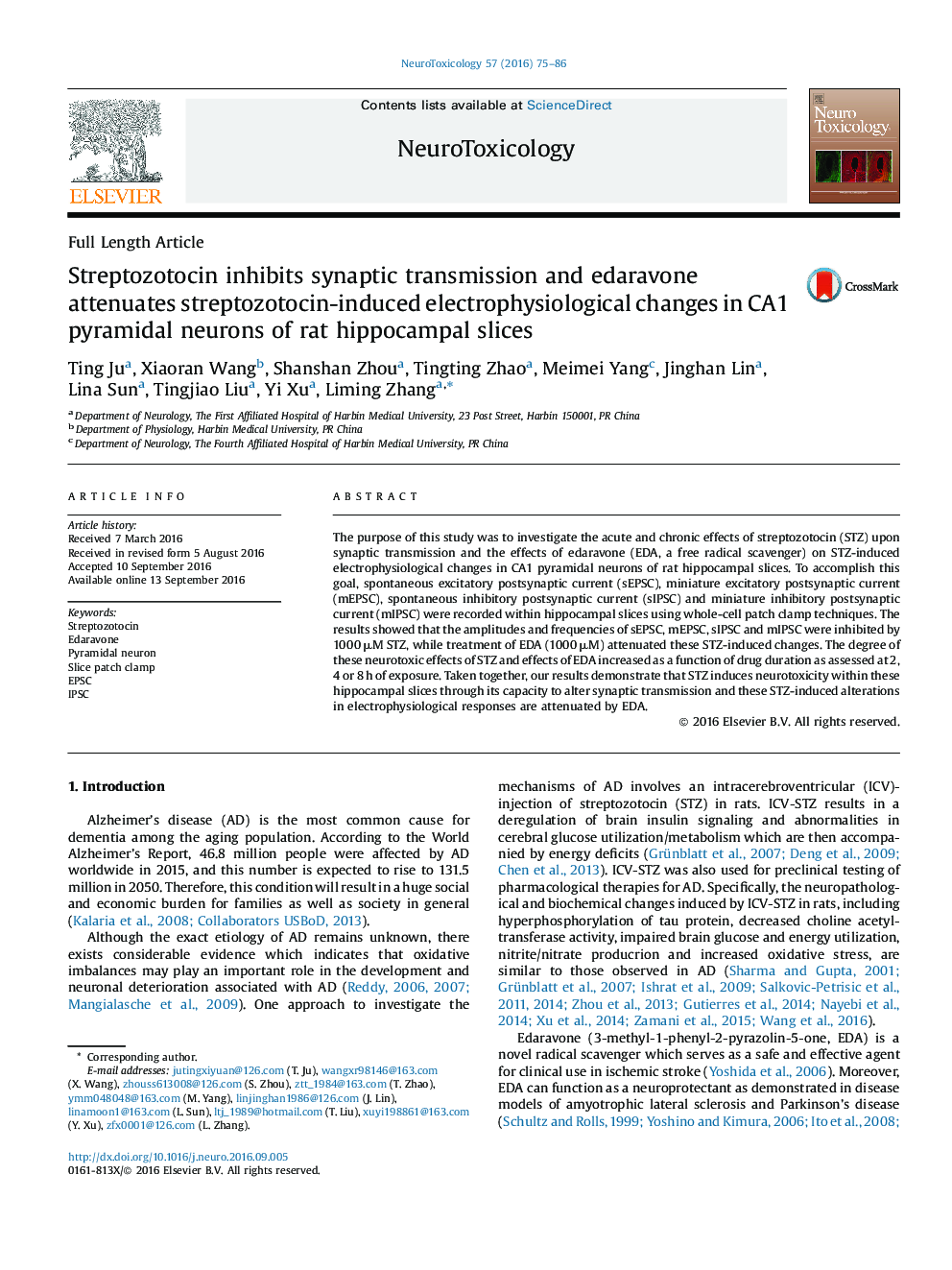| Article ID | Journal | Published Year | Pages | File Type |
|---|---|---|---|---|
| 8550421 | NeuroToxicology | 2016 | 12 Pages |
Abstract
The purpose of this study was to investigate the acute and chronic effects of streptozotocin (STZ) upon synaptic transmission and the effects of edaravone (EDA, a free radical scavenger) on STZ-induced electrophysiological changes in CA1 pyramidal neurons of rat hippocampal slices. To accomplish this goal, spontaneous excitatory postsynaptic current (sEPSC), miniature excitatory postsynaptic current (mEPSC), spontaneous inhibitory postsynaptic current (sIPSC) and miniature inhibitory postsynaptic current (mIPSC) were recorded within hippocampal slices using whole-cell patch clamp techniques. The results showed that the amplitudes and frequencies of sEPSC, mEPSC, sIPSC and mIPSC were inhibited by 1000 μM STZ, while treatment of EDA (1000 μM) attenuated these STZ-induced changes. The degree of these neurotoxic effects of STZ and effects of EDA increased as a function of drug duration as assessed at 2, 4 or 8 h of exposure. Taken together, our results demonstrate that STZ induces neurotoxicity within these hippocampal slices through its capacity to alter synaptic transmission and these STZ-induced alterations in electrophysiological responses are attenuated by EDA.
Related Topics
Life Sciences
Environmental Science
Health, Toxicology and Mutagenesis
Authors
Ting Ju, Xiaoran Wang, Shanshan Zhou, Tingting Zhao, Meimei Yang, Jinghan Lin, Lina Sun, Tingjiao Liu, Yi Xu, Liming Zhang,
